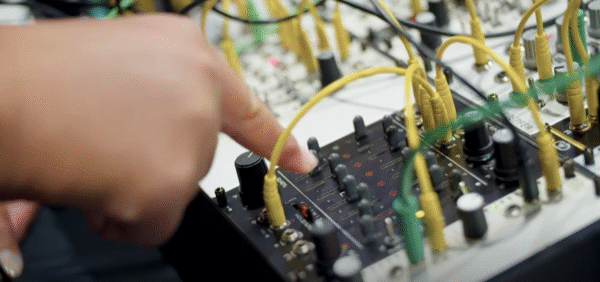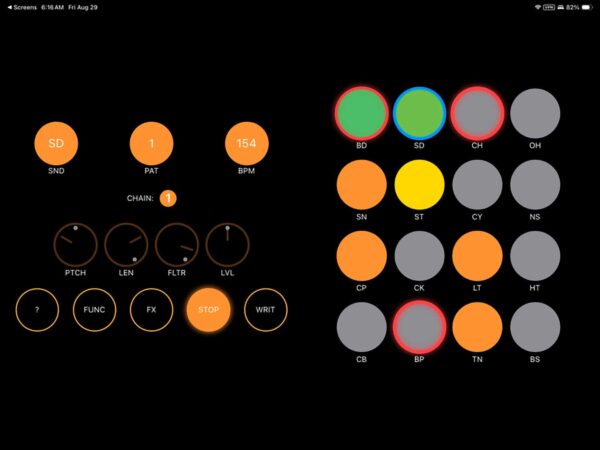muSonics Previews Four Voice 5U Modular Synth At Knobcon 2025
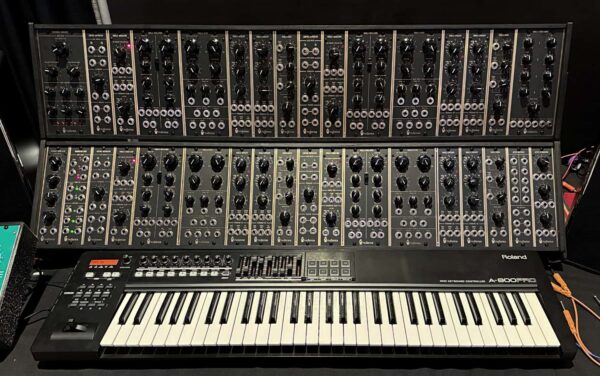
At Knobcon 2025, held Sept 5-7 in the Chicagoland area, muSonics previewed their latest creation, the Four Voice polyphonic synthesizer in MU format.
The muSonics Four Voice is a fully-modular system, with internal normalization. It builds on the company’s previously introduced Vanilla Synth, a MU format synth, inspired by classic Tom Oberheim designs.
The Four Voice essentially combines four Vanilla Synth voices in a single case, with a few additional models to handle polyphonic control.
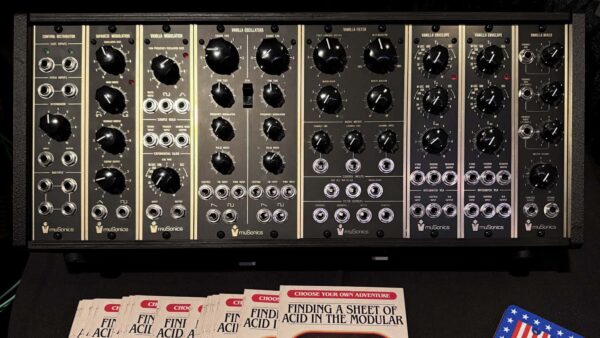
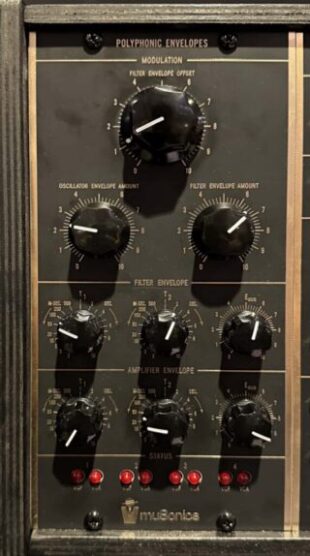
The muSonics Four Voice features four of the company’s Vanilla Synth voices, plus some new modules, like the Polyphonic Envelopes module, that let you play the system as a polysynth
Like the Oberheim Four Voice that it takes inspiration from, the muSonics Four Voice is built from four completely independent synth voices.
This means that each voice has its own dedicated set of controls, and that creating a polyphonic patch requires adjusting the setting on each of the voices. This is more work than tweaking a computer-controlled poly design, but the result is that each voice has slight variations, creating a very rich and interesting sound.
It also means that you can configure the voices with distinct sounds and use the system as four multi-timbral voices and in other combinations.
Unlike the Oberheim Four Voice, the muSonics Four Voice is fully modular, and made up of individual MU modules. This means that you can treat it as four individual modular synthesizers, expanding the sonic possibilities immensely.
And you can treat the system as a large modular system, using modules from multiple voices to create complex patches to expand your sound design options.
The muSonic Four Voice is a dotcom-style Moog format design, meaning it offers the traditional look and usability of ‘man-size’ modules, but with modern power and CV/Gate standards and connectivity.
Large controls let you precisely dial in sounds. Clear layout makes it easy to understand the signal flow. And knobs are sized hierarchically, with the largest knobs reserved for parameters that you’re more likely to want to adjust in performance.
It’s clear that muSonic’s Suit and Tie Guy has put a tremendous amount of thought into the design. All this would be meaningless, though, if it sound great – which it does.
A video overview, via CatSynth TV, with muSonic’s Matt Baxley:
The system that muSonics introduced at Knobcon is a prototype and the format may change. Suit said that he’s considering reducing the width of the case and making the system a little taller, so that all controls are in easy reach of one hand.
Details on pricing and availability are still to come at the muSonics site.
